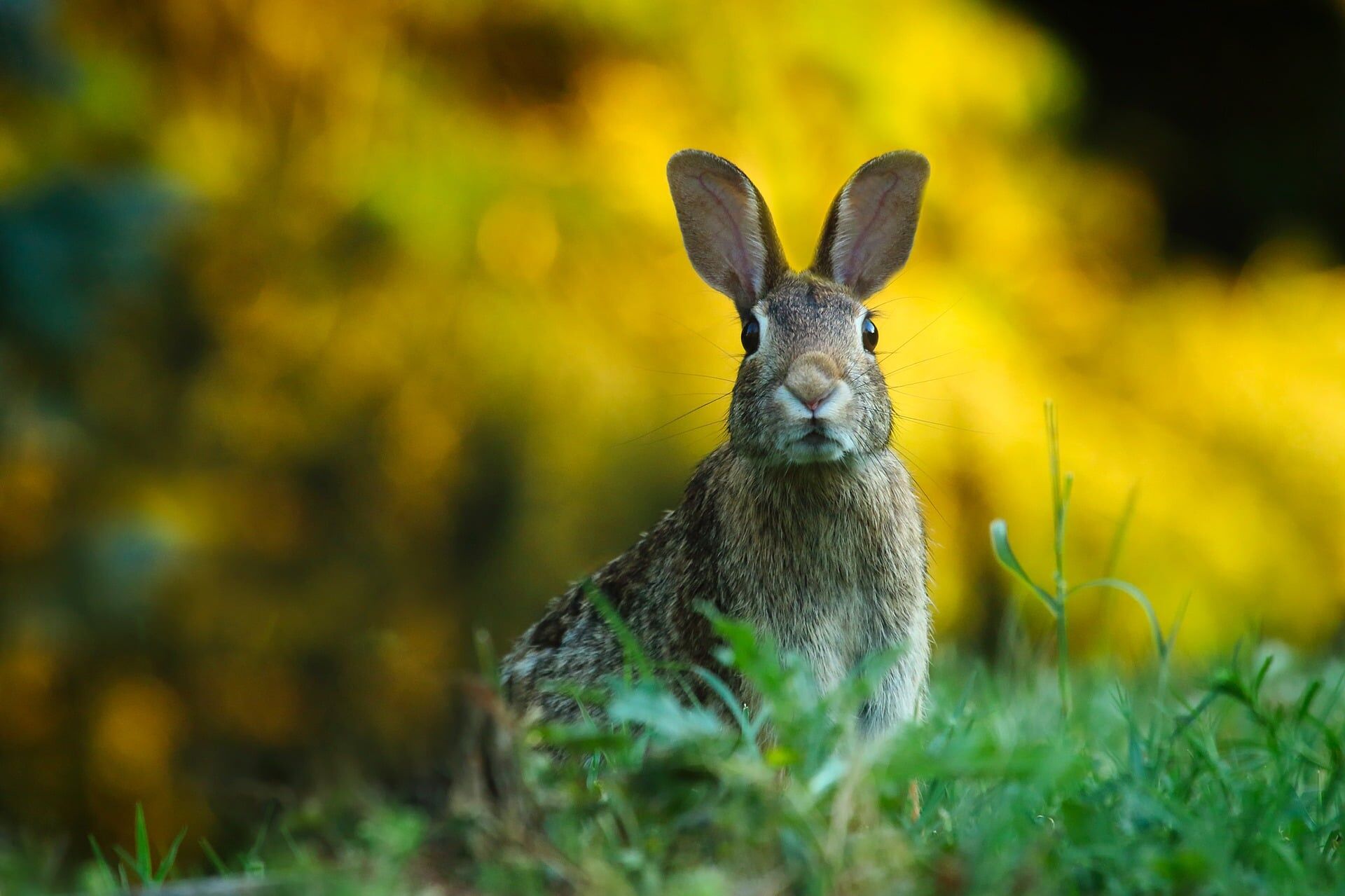Home ▸ Lawn Care Guide ▸ Wildlife ▸ How Do I Stop Wild Rabbits?
How Do I Stop Wild Rabbits?

These little guys are notorious for attacking lawns, and once they start you can be sure they won’t stop!
The little nose twitchers are more than likely to be found on your lawn if you live in the countryside, especially if your lawn connects to a nearby field. But not to fear, we are here to provide you with the information to help you stop them from ruining your lawn or other plants you may have in your garden.
What Problems will they cause?
Like their domestic cousins, wild rabbits are renowned for their unrelenting eating habit. If they can get into your garden, they’re sure to be constantly grazing, be that on your prize lawn or (even worse!) those beautiful flowers you’ve waited all year to see blooming. Let’s not even think about the carnage they can wreak on your vegetable patch!
Rabbits also have a habit of diggings holes which can be a real eyesore on your lovely lawn. They can also gnaw away at the bottom or trees removing the bark and leaving bald patches behind. Yes, they really do eat everything!
What about Hares?
Hares, like their fellow-Leporids the rabbits, are particularly partial to bedding plants and vegetables. Unlike rabbits however, they nest in shallow depressions in the ground rather than burrowing. As a result, they are unlikely to cause any damage to your lawn. Try any or all of the anti-rabbit counter-measures below if you’re looking to protect your plants, fruits and vegetables.

The Solution
You’re probably familiar with the old phrase “There’s more than one way to skin a cat”, and while we hope you don’t find it necessary to go quite so far, there are several options open to you when it comes to deterring rabbits.
Fencing
- Fencing is a great way to start. We advise that your fences should be of 2.5cm wire mesh and 120-140cm in height.
- To stop rabbits from tunnelling underneath, the bottom of the mesh should be sunk into the soil by about 30cm below ground level, with the lower 15cm (6in) bent outwards.
- Fencing is never a cheap option, but there is one glimmer of hope in this regard. Rabbits tend to burrow close to existing structures. Often this will be next to a shed or garage, near a porch or underneath decking. This means that your rabbit-proof fencing only needs to address certain vulnerable points around your garden, not the whole perimeter.
- If you find such intense fencing too much of an eyesore, an Animal Repellent may be a viable option. The repellent is liquid based and is sprayed on your plants, leaving a bitter taste to deter the rabbits and any other wildlife who are feeling peckish. Clearly, this is not the best choice if you are intending to eat those particular plants yourself and should be avoided if there is any chance of your pets ingesting the poison too.
Other repellents
- Other alternatives include using Blood Meal Fertiliser. Many animals are deterred by the smell of the dried blood in this powder form, including rabbits, deer and moles, and it can be very successful. Do take care to avoid over-doing its use though, as it will scorch your plants and lawn if spread too intensely. This may appeal to you if you’re looking for an organic solution and avoid using chemicals around the garden.
Tidy the garden
- Like all animals, rabbits seek out shelter, so you need to stay one step ahead of them by removing any tall grass, piles of leaves or other areas which provide the kind of cover in which rabbits can settle.
Consider rabbit-resistant plants
- Growing plants which rabbits (and other animals) find repulsive is an excellent organic deterrent, and there are many which fit the bill. The RHS Society has an extensive list of rabbit-resistant plants. Below are some examples, but see the full list on their website
- Suitable for shady gardens: Hellebores
- For sunny spots: Sunflowers
- Do well in containers: Impatiens (busy Lizzie) or Columbines
- Small tree: Laurus nobilis (bay tree)
- Shrub: Buddleja davidii (butterfly bush)
- Our favourites are Lavender, Primroses, Daffodils, Creeping Phlox and Azalea. Even certain vegetables and herbs send the bunnies scampering away. You might try Mint, Basil and Tarragon or Onions, Leeks and Asparagus, which are unappealing to rabbits
Repair damaged areas
- If the rabbit has concentrated its efforts into digging up your lawn, smaller areas can be repaired by adding soil, roughing up to form a tilth, before putting down some seed and keeping watered until germination.
Other alternatives are designed to have a more permanent outcome, including shooting, poisoning and gassing. Obviously, there is a good deal more risk involved with these, both to us and others in the vicinity, so these drastic measures are best left to professionals. The same can be said for traps and snares as they do have to meet legal requirements under the Wildlife and Countryside Act 1981. Humane traps are also available, which simply trap the rabbit so you can relocate it. If you choose this method, do make sure to drop your lop-eared interlopers far enough away from home that they don’t just stroll right back!
Finally, the solution may be even closer to home than you thought. Rabbits see dogs as something of a nemesis, so If you have your own pet dog patrolling the garden, rabbits will soon get the message and leave well alone.
